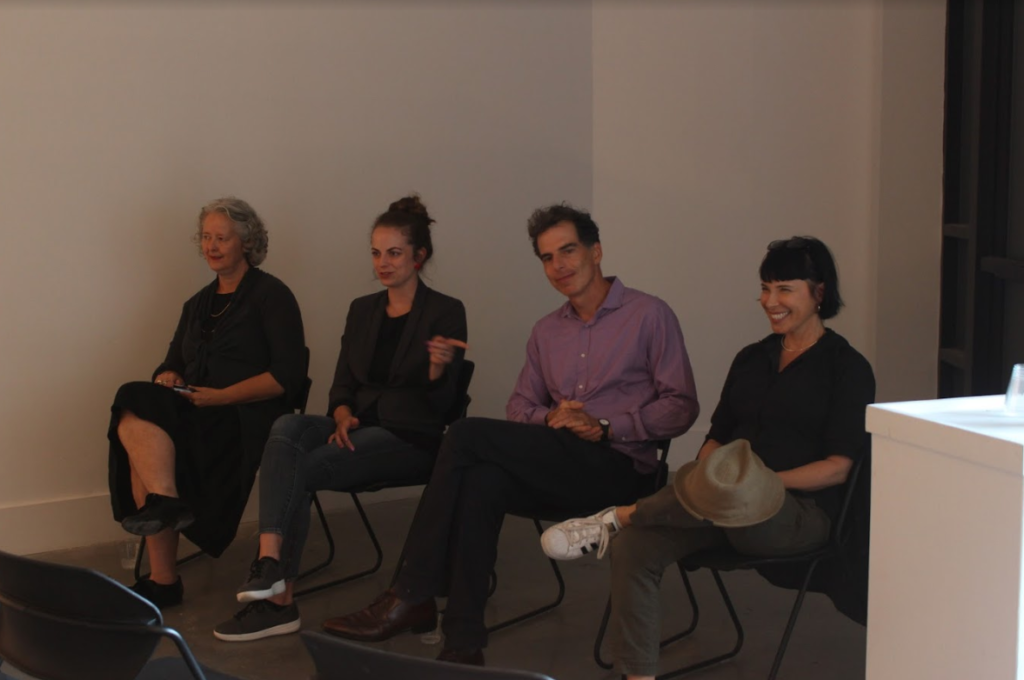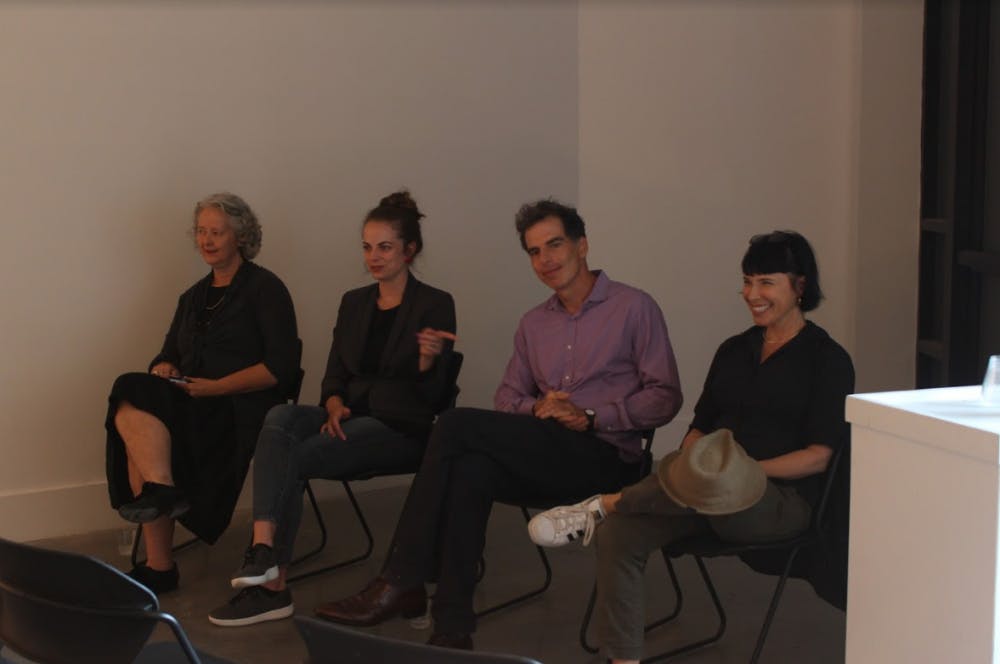By Chelsie Derman
Correspondent

Featuring an inspiring and experience-emphasized discussion panel, the College’s Citizen/Art Exhibition allowed artists to showcase their creations and careers to students and members of the Ewing community in the Art and Interactive Multimedia Building’s art gallery on Sept. 11.
Margaret Pezalla-Granlund, director of the College’s art gallery and Sarnoff Collection, kicked off the night by introducing the two artists — Elizabeth Demaray and Jonathan Feldschuh, alongside curator Julia Buntaine Hoel.
The artists, both of whom are from New York, presented more about their artforms, specifically a common, alternate study-area that Hoel found in their work — science.
“The best part about curating is to think about your favorite artist with a common theme,” Hoel said.
Hoel wanted to find artists who explored their respective topics and used research in displaying their work. While Feldschuh used his physics background to illuminate what a particle may look like, Demaray examined living objects, such as plants, to make her art come alive.
When both artists were asked why they chose their careers, both Demaray and Feldschuh said that they never thought they would pursue art as young students. Feldschuh went to Harvard University for physics, while Demaray went to the University of California for cognitive and neural science, believing she would one day go to medical school and receive her PhD. However, both utilized their knowledge from science to produce thoughtful, authentic artwork.
Feldschuh left college to become a painter, as his desire to focus on how people view the world motivated him to dabble in a strong interest with material. Demaray, on the other hand, became interested in art after taking a sculpture class in college.
“When you make a piece of art, you communicate,” Demaray said.
Although both Feldschuh and Demaray create art from a science background, the mediums they use in their pieces vary.
Feldschuh had some of his paintings on display. At the gallery, guests took a look at his paintings tilted “Particles #9,” “Particles #16” and “The Large Hadron Collider #24,” all made of acrylic and pencil. In an attempt to portray how particles evolve, Feldschuh used his brush in various angles to mirror what they may look like, if created as an art form.
Feldschuh wanted to incorporate his area of study into his work by having the “piece describes the process of its own.” Using art as a way to show science, Feldschuh put deliberate thought when stroking the brush on the paper, rather than just painting in a haphazard manner.
In constructing her artwork, Demaray considered plants and animals, as she is passionate about living things that exist in the real world. At the art exhibition, guests could see Demaray’s plant sweater artwork, a small bonsai wearing a knitted sweater.
“I thought the art itself was very interesting,” said Summer Martin, a freshman computer science major. “All the pieces were very diverse from each other.”
The artists acknowledged the distinct aspects of their work. Feldschuh said that with art, people can obtain details that they would not be able to see otherwise, in reference to particles that the human eye cannot normally pick up.
Demaray described art as a “beautiful moment,” as if people used a different section of their brain. Feldschuh and Demaray described art as something incredible, expressing the beneficial qualities of pursuing one’s passion.
Ultimately, Hoel said that the best way to push someone towards achieving their goals is to inspire them.
“You can’t fear someone into physical action,” she said.







